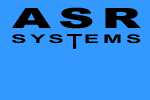

 |
|
 |
|
What is ASR? Aquifer Storage Recovery (ASR) is the storage of water in a well during times when water is available, and recovery of the water from the same well during times when it is needed. ASR provides a cost-effective solution to many of the world's water management needs, storing water during times of flood or when water quality is good, and recovering it later during emergencies or times of water shortage, or when water quality from the source may be poor. Large water volumes are stored deep underground, reducing or eliminating the need to construct large and expensive surface reservoirs. In many cases, the storage zones are aquifers that have experienced long term declines in water levels due to heavy pumping to meet increasing urban and agricultural water needs. Groundwater levels can then be restored if adequate water is recharged. The main driving force behind the current rapid implementation of ASR technology around the world is water supply economics. ASR systems can usually meet water management needs at less than half the capital cost of other water supply alternatives. When compared to alternatives requiring construction of water treatment plants and surface reservoirs to meet increasing peak demands, potential cost savings have been known to exceed 90 percent. A second important driving force has been the increased recognition of this technology as being good for the environment, aquatic and terrestrial ecosystems. By reducing or eliminating the need for construction of dams, and by providing reliable water supplies through diversions of flood flows instead of low flows, ASR systems are usually considered to be environmentally friendly. Storage zones range in depth from as shallow as about 75 m (200 ft) to as deep as 900 m (2,700 ft). Groundwater levels in the storage zones range from as much as 10 m (30 ft) above land surface to more than 300 m (900 ft) below land surface (bls). Natural water quality in the storage zone ranges from fresh, suitable for drinking without treatment, to brackish, including total dissolved solids (TDS) concentrations up to about 5,000 mg/l. Most sites have one or more natural water quality constituents that are unsuitable for direct potable use except following treatment. Such constituents may include iron, manganese, fluoride, hydrogen sulfide, sulfate, chloride, radium (224/226 /228), gross alpha radioactivity, and other elements that are typically displaced by the stored water as the bubble is formed underground. At two sites, one of which is currently in operation, ASR was shown to be feasible and highly cost-effective storing drinking water in an aquifer containing seawater. For most of these sites, it is first necessary to properly develop the storage zone around the well, after which it is possible to recover the same volume as that stored. At a few, more challenging sites water quality, hydraulic or geochemical constraints may limit recovery to somewhat less than the volume stored. Water is stored
deep underground in water-bearing geologic formations, or "aquifers"
that may be in sand, clayey sand, sandstone, gravel, limestone, dolomite,
glacial drift, basalt and other types of geologic settings. Stored water
displaces the water naturally present in the aquifer, creating a very
large bubble around the well. The bubble is usually confined by overlying
and underlying geologic formations that do not produce water, however
at several sites the aquifer is unconfined. Storage volumes in these
bubbles range from as small as about 50 Ml (13 million gallons) in individual
ASR wells, to as much as 10,000 Ml (2.5 BG) or more in large ASR wellfields. Most ASR systems
provide seasonal water storage, storing water during the wet season
and recovering it during the following dry season. Many also use ASR
for water banking, storing water during wet years and recovering it
years later during extended droughts. Increasingly, many water managers
are constructing ASR systems to ensure reliability during emergencies,
whether severe floods, earthquakes, contamination incidents, pipeline
breaks, or potential damage due to warfare or sabotage. ASR is being
increasingly considered for development of strategic water reserves
to provide water supply security from terrorism or warfare. In fact,
there are at least 22 ASR applications, and others will undoubtedly
follow. Several sites are storing untreated groundwater pumped from overlying or underlying aquifers, or from well fields located at great distances from the ASR site. When needed, this water is recovered from the storage zone and combined with whatever flows are then available from the primary water sources, to help meet peak or emergency water demands. In coastal areas subject to salt water intrusion, or other areas subject to contamination or overpumping, ASR is being used to achieve the full water supply benefits of local aquifers, which are then used for water storage more than for water production. Groundwater ASR is increasingly viewed as a desirable application of ASR technology. The newest ASR
application is for storage of partially treated surface water. Prior
to recharge, water is treated sufficiently to ensure that the aquifer
does not plug with particulates or organic material, and to ensure that
the aquifer is not contaminated. Stored water is recovered to help meet
peak demands for supplemental untreated water, whether for urban needs,
ecosystem protection, low streamflow maintenance, agricultural irrigation,
industrial water requirements, power plant cooling makeup water, or
other needs.
|